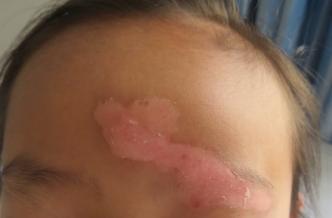
Early signs (symptoms) of Vitiligo
Vitiligo is a skin condition in which the skin loses melanin, the pigment that determines the color of your skin, hair and eyes. Vitiligo occurs when the cells that produce melanin die or no longer form melanin, causing slowly enlarging white patches of irregular shapes to appear on your skin. And the truth is, there is no known cure for this disease. All that can be done is try and control its symptoms, the white patches. It is not a communicable disease.

Any part of the body may be affected by Vitiligo, depigmentation usually develops first on sun exposed areas of the skin, such as hands, feet, arms, face and lips. Genitals also may be affected. It can start to appear at any age, Vitiligo usually first appears between the ages of 10 and 30. Vitiligo generally appears in one of three patterns – Generalized. In this most frequent subtype, pigment loss is extensive across many parts of the body, often evenly. Segmental loss of skin color happens on only one side of the body. This is more inclined to happen at a younger age, progress for a year or two, and then stop. Focal depigmentation is limited to one or a few areas of the body.
Most people with this disorder are otherwise healthy and have normal skin sensation and texture. But Vitiligo may be more common in people that have certain autoimmune diseases. These may include vitamin B-12 deficiency anemia known as pernicious anemia, Addison’s disease or thyroid disorders such as hypothyroidism and hyperthyroidism. Vitiligo also has a potential to affect all races and both sexes equally.
Since this is a disease which differs from person to person and progresses differently on different individual, its natural course of occurrence is quite hard to predict, as there is no general uniform way that it progresses.
When the patient starts to see milky patches, they should immediately consult a doctor, preferably a dermatologist. It is also important to know about the patient’s family history and whether or not anyone in their family suffers from an autoimmune disease. It should also be checked if the patient is sensitive to the sun.
People usually get scared whenever they see a white patch on their body, thinking that it is Vitiligo. White patches may not always be Vitiligo and can happen due to liver disorders, infections, skin allergies, etc. Thus it is prudent to go and consult a doctor as soon as these patches start to appear.